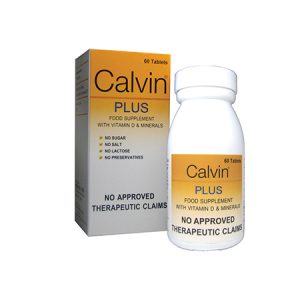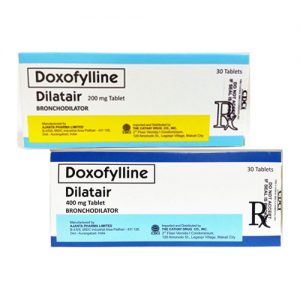Description
The Cathay Drug Co., Inc.
DESCRIPTION
MONUROL (fosfomycin trometamol), is a white granular with mandarin-orange flavour.
Each sachet contains:
Fosfomycin trometamol, Ph. Eur ……………….. 5.631 g (equivalent to Fosfomycin 3 g)
CHARACTERISTICS
Fosfomycin trometamol (MONUROL), mono (2-ammonium-2-hydroxy-methyl-1,3-propanediol) (2R-cis)-3-methyloxiranyl)phosphate, is an original molecule with an antibacterial action derived from phosphoric acid and developed by the ZAMBON RESEARCH LABORATORIES.
Fosfomycin trometamol (Monurol) has a high broad-spectrum bactericidal activity against Gram-positive and Gram-negative microorganisms, including penicillinase-producing strains and the bacteria most frequently isolated in urinary infections (E. coli, Proteus, Klebsiellae, Enterobacter, Pseudomonas, Staphylococcus, etc.).
DISTICTIVE PROPERTIES
MONUROL (fosfomycin trometamol) has the following distinctive properties:
- Complete solubility in water
- Prompt and effective absorption following oral administration
- High plasma and tissue levels
- Excretion of the unchanged active compound mainly through the kidneys
- Elevated bactericidal concentrations are rapidly attained (in 2-4 hours) and remain for at least 36-48 hours after administration of a single therapeutic dose
- Absence of cross-resistance with other antibacterials
- Unchanged antibacterial activity within wide variations of urinary pH
- Possible synergism with most antibacterials
Fosfomycin trometamol (Monurol), due to its specific properties, is particularly indicated for short term (one or two doses) prophylaxis and treatment of acute uncomplicated infections of the lower urinary tract. It has been shown that this therapeutic approach ensures the following advantages:
- It is easy and with the same efficacy as long-term treatment
- It is well tolerated
- It does not have the risk of an early interruption of treatment by the patient on remission of the clinical symptoms; this is quite a common situation in clinical practice when long term treatment of uncomplicated urinary infections is used.
- Due to its high concentration at the site of infection, it ensures a bactericidal action on most uropathogens thus, reducing the risk of appearance of new resistant bacterial strains.
PHARMACOLOGICAL PROPERTIES
PHARMACODYNAMIC PROPERTIES
Fosfomycin trometamol (Monurol), an analogue of phosphoenolpyruvate inhibits the phosphor-enolpyruvate transferase enzyme, thereby irreversibly blocking the condensation of uridine diphosphate-N-acetylglucosamine with p-enolpyruvate, one of the steps in bacterial cell wall synthesis. It can also reduce bacterial adhesion to bladder mucosa, which can be predisposing factor for recurring infections.
The emergence of in vitro resistance occurs as a mutation of the chromosomal genes glpT and uhp, which control the transport of L-alpha-glycerophosphate and hexose phosphate, respectively.
PHARMACOKINETICS
Absorption and Distribution
After oral administration, Fosfomycin trometamol (Monurol) is well absorbed from the gut and has an absolute bioavailability of about 50%. Food delays absorption, not influencing urinary concentrations.
Fosfomycin is distributed to the kidneys, bladder wall, prostate and seminal vesicles.
Elimination
40% – 50% of the dose of Fosfomycin trometamol (Monurol) is found in the urine with an elimination half-life of about 4 hours and to lesser extent in feces (18 -28% of the dose). The appearance of a second serum peak 6 and 10 hours after drug intake suggests that the drug is subject to enterohepatic recirculation.
INDICATIONS
Fosfomycin is essentially a urinary antibiotic. It is indicated for:
- Acute bacterial cystitis, acute episodes in relapsing bacterial cystitis, acute bacterial urethro-vesical syndrome, non-specific bacterial urethritis
- Significant symptomatic bacteriuria
- Post-operative urinary infections
- Prophylaxis of urinary tract infections in surgical or diagnostic procedure involving lower urinary tract in adult males and females
DOSAGE AND ADMINISTRATION
The product is not recommended for children below the age of 12.
Adults
Fosfomycin trometamol is indicated at a single oral dose regimen (3g). Clinical symptoms usually disappear 2-3 days after beginning of treatment.
In acute infections of lower urinary tract (cystitis, non-gonococcal urethritis) caused by microorganisms susceptible to MONUROL (fosfomycin trometamol), a single dose (3 g of active substance in adults) is sufficient for recovery. The persistence of local symptoms, if any, after treatment, is not necessarily a sign of therapeutic failure, but usually the consequence of the past inflammation.
In more clinically problematic cases (elderly, bedridden patients, recurrent infections) or in infections due to microorganisms usually susceptible to the highest antibiotic doses (Pseudomonas, Enterobacter, Indole+Proteus), two Monurol (fosfomycin trometamol) doses can be administered at a 24-hr interval.
The recommended regimen for the prophylaxis of urinary tract infection in surgery and diagnostic procedure involving lower respiratory tract in adult males and females is one MONUROL (fosfomycin trometamol) 3 g sachet 3 hours before surgery and one MONUROL (fosfomycin trometamol) 3 g sachet 24 hours after surgery.
The safety and efficacy of MONUROL (fosfomycin trometamol) 3 g in children below 12 years has not been established. There are no available data.
Fosfomycin trometamol (Monurol) must only be administered orally on an empty stomach, preferably at bedtime, after emptying the bladder. The dose must be dissolved in a glass of water (50-75 mL) and administered soon after the granules are dissolved.
CONTRAINDICATIONS
- Documented hypersensitivity to the active substance of to any of the excipients
- Patients with severe renal failure (creatinine clearance <10 mL/min)
- Patients on hemodialysis
WARNINGS AND PRECAUTIONS
Hypersensitivity reactions, including anaphylaxis and anaphylactic shock, may occur during fosfomycin treatment and may be life-threatening. If such reaction occurs, fosfomycin should never be re-administered and an adequate medical treatment is required.
Antibiotic associated diarrhea has been reported with the use of nearly all antibacterial agents, including fosfomycin trometamol, and may range in severity from mild diarrhea to fatal colitis. Diarrhea, particularly if severe, persistent, bloody during or after treatment of MONUROL 3 g (fosfomycin trometamol) including several weeks after treatment, may be symptomatic of Clostridium difficile-associated-disease (CDAD).
It is therefore important to consider this diagnosis in patients who develop serious diarrhea during or after treatment with MONUROL (fosfomycin trometamol). If CDAD is suspected or confirmed, appropriate treament should be initiated without delay. Drugs inhibiting peristalsis are contraindicated in this situation.
Food can retard the absorption of the active compound of MONUROL (fosfomycin trometamol) with consequent slight decrease in blood and urinary levels. Therefore, MONUROL (fosfomycin trometamol) should be taken on an empty stomach, 2-3 hours apart from meals.
Renal insufficiency: urinary concentrations of fosfomycin remain effective for 48 hours after a usual dose if creatinine clearance is above 10 mL/min.
MONUROL 3g Granules for Solution (fosfomycin trometamol) contains sucrose. Patients with rare hereditary problems of fructose intolerance, glucose-galactose malabsorption or sucrase-isomaltase insufficiency should not take this medicine.
Experience in children is limited.
ADVERSE EFFECTS
The most common adverse reactions following the single-dose administration of Fosfomycin trometamol (Monurol) involve the gastrointestinal tract, mainly diarrhea. These events are usually self-limited in duration and resolve spontaneously.
The following table displays Adverse Drug Reactions of Fosfomycin trometamol (Monurol) from either clinical trial or post-marketing experiences.
The displayed frequency categories use the following convention:
Very common (>10); common (>1/100 to <1/10); uncommon (>1/1000 to <1/100); rare (>1/10000 to <1/1000); very rare (<1/10000), not known (cannot be estimated from the available data). Within each frequency grouping, undesirable effects are presented in order of decreasing seriousness.
| System Organ Class | Adverse Drug Reactions
Frequency Category |
|||
| Common | Uncommon | Rare
|
Not known | |
| Infections and Infestations | Vulvovaginitis | |||
| Immune System
|
Hypersensitivity | Anaphylactic reactions, including anaphylactic shock, hypersensitivity | ||
| Nervous System disorders | Headache
Dizziness |
Paraesthesia | ||
| Cardiac Disorders | Tachycardia | |||
| Respiratory, thoracic and Mediastinal Disorders | asthma | |||
| Gastrointestinal Disorders
|
diarrhea
Dyspepsia nausea |
abdominal pain Vomiting | Antibiotic-associated colitis | |
| Skin and subcutaneous tissue disorders | Rash
Urticaria pruritus |
angioedema | ||
| General Disorders and Administration Site conditions | Fatigue | |||
| Vascular disorders | Hypotension | |||
INTERACTION WITH OTHER MEDICINAL PRODUCTS AND OTHER FORMS OF INTERACTION
When co-administered with fosfomycin, metoclopramide lowers the serum and urine concentrations of fosfomycin.
Other drugs that increase gastrointestinal motility may produce similar effects.
Food may delay the absorption of the active compound of MONUROL (fosfomycin trometamol) with consequent slight decrease in peak plasma levels and urinary concentrations. Therefore, MONUROL (fosfomycin trometamol) should be taken on an empty stomach, 2-3 hours apart from meals.
Specific problems concerning the alteration in INR. Numerous cases of increased antivitamin K antagonists activity have been reported in patients receiving antibiotics. Risk factors include severe infection or inflammation, age and poor general health. Under these circumstances, it is difficult to determine whether the alteration in INR is due to the infectious disease or its treatment. However, certain classes of antibiotics are more often involved and in particular, fluoroquinolones, macrolides, cyclins, co-trimoxazole and certain cephalosporins.
Pediatric Population
Interaction studies were performed only in adults.
DRUG INTERACTION
Fosfomycin does not adversely affect the pharmacological effects of widely prescribed drugs like analgesics, anticonvulsants, bronchodilators, diuretics, spasmolytics and antipyretics. At the same time, the use of these drug classes does not affect the efficacy of fosfomycin trometamol.
FERTILITY, PREGNANCY AND LACTATION
No effect on fertility has been reported in animal studies. No data on humans is available.
At present time, single-dose treatments are not suitable to treat urinary tract infections in pregnant women.
Animal studies do not indicate reproductive toxicity. A large amount of data concerning effectiveness of fosfomycin during pregnancy is available. However, only moderate amount of safety data on pregnant women is available and does not indicate any malformative or feto-neonatal toxicity of fosfomycin.
The use of MONUROL (fosfomycin trometamol) may be considered during pregnancy if necessary.
Fosfomycin is excreted into human milk at low level after a single injection. Therefore, fosfomycin can be used during pregnancy after a single oral dose.
EFFECTS ON THE ABILITY TO DRIVE AND USE MACHINES
No specific studies have been performed but patients should be informed that dizziness has been reported. This may influence some patients’ ability to drive and use machines.
OVERDOSAGE
Experience regarding the overdose of oral fosfomycin is limited. The following events have been observed in patients who have taken MONUROL (fosfomycin trometamol) in overdose:
Vestibular loss, impaired hearing, metallic taste, general decline in taste perception, cases of hypotonia, somnolence, electrolyte disturbances, thrombocytopenia, and hypoprothrombinemia have been reported with parenteral use of fosfomycin.
In the event of overdosage, treatment should be symptomatic and supportive. Rehydration is recommened to promote urinary elimination of the drug.
AVAILABILITY
3g/sachet Granules for Solution
STORAGE
Store at temperatures not exceeding 30°C.
Manufacturer
Zambon Switzerland Ltd.,
6814 Cadempino, Switzerland
Marketing Authorization Holder
The Cathay Drug Co., Inc.
2/F Vernida I Condominium
120 Amorsolo St., Legaspi Village, Makati City
Date of revision: June 2019






Reviews
There are no reviews yet.